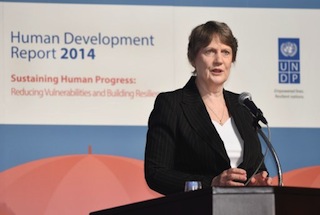4th February, 2016

Kazeem Ugbodaga
The United Nations Development Programme, UNDP, says the Legal Environment Assessment, LEA, of a nation is key to mitigating HIV/AIDS burden.
HIV/AIDS burden increases under a poor LEA adopted by any nation, but in the case of Nigeria, the UNDP thumps up her LEA framework which has impacted positively in fighting stigma associated with the HIV/AIDS pandemic.
Pa Lamin Beyai, Country Director, UNDP, Nigeria, in a statement argues that an assessment of a country’s national legal and regulatory frameworks is therefore an important step in strengthening response to HIV and AIDS.
“The primary aim of a legal and regulatory assessment is to identify and review HIV, health and any other related laws, regulations; and policies and practices, in order to establish their relevance to, and impact on the national response to HIV and AIDS,” he says.
The 2011 Political Declaration on HIV and AIDS and the Global Commission Report on HIV and the Law titled ‘Right, Risks and Health’ recognize that the law can have a profound impact on the lives of vulnerable and marginalized people.
Beyai stresses that in recent years, the law has been a positive force in advancing effective HIV responses in Nigria, adding that the judicial and legislative actions have, for instance, improved access to lifesaving treatments and have protected people living with HIV against discrimination.
“Where the law has guaranteed equal inheritance and property for women and girls, it has helped to mitigate the social and economic burden caused by HIV and AIDS.
Beyai highlighted that the 1999 Constitution of the Federal Republic of Nigeria (as amended), offers general protection against discrimination and protects the rights of all Nigerians.
“However, there are concerns that the legal and regulatory environment for HIV response could be improved. Some of the ongoing efforts at mitigating the environment include the initiatives on integration of Key & Affected Populations (KAP) issues into the process of drafting the Concept Note, leading to the development of the New Funding Model of the Global Fund Grant (2014-2017).
“This is already providing the required space for key populations to engage on issues of enhanced access to services in a non-discriminatory environment. This is important, given the disproportionately higher HIV prevalence rates among key populations ranging from 27.4% among Brothel Based Female Sex Workers (BBFSW), 21.7% among Non-Brothel Based Female Sex Workers (NBBFSW), 17.2% among MSM to 4.2% among Injection Drug Users (IDUs) (Integrated Biological and Behavioural Survey, 2012),” he adds.
According to Beyai, “it is my hope that the findings and recommendations of the Legal Environment Assessment (LEA) will inform the development of a national plan of action with clear accountability frameworks for all stakeholders for evidence informed policy and legal reforms.”


